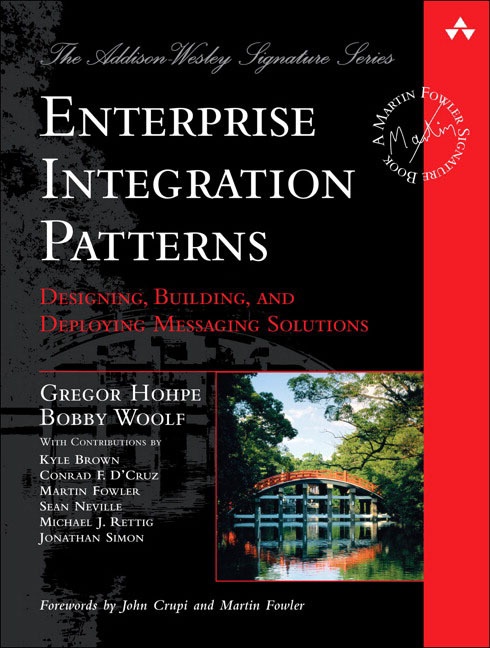Read more
Informationen zum Autor Gregor Hohpe leads the enterprise integration practice at ThoughtWorks, Inc., a specialized provider of application development and integration services. Drawing from his extensive experience designing and implementing integration solutions for enterprise clients, Gregor has published a number of papers and articles presenting a no-hype view on enterprise integration, Web services, and Service-Oriented Architectures. He is a frequent speaker at technical conferences around the world. Bobby Woolf is coauthor of The Design Patterns Smalltalk Companion (Addison-Wesley, 1998), and author of articles in IBM DeveloperWorks , Java Developer's Journal , and elsewhere. He has been a tutorial presenter at OOPSLA, JavaEdge, and Smalltalk Solutions, among other conferences. 0321200683AB09122003 Klappentext This book provides a consistent vocabulary and visual notation framework to describe large-scale integration solutions across many technologies. It also explores in detail the advantages and limitations of asynchronous messaging architectures. The authors present practical advice on designing code that connects an application to a messaging system, and provide extensive information to help you determine when to send a message, how to route it to the proper destination, and how to monitor the health of a messaging system. If you want to know how to manage, monitor, and maintain a messaging system once it is in use, get this book. Zusammenfassung Enterprise Integration Patterns provides an invaluable catalog of sixty-five patterns, with real-world solutions that demonstrate the formidable of messaging and help you to design effective messaging solutions for your enterprise. The authors also include examples covering a variety of different integration technologies, such as JMS, MSMQ, TIBCO ActiveEnterprise, Microsoft BizTalk, SOAP, and XSL. A case study describing a bond trading system illustrates the patterns in practice, and the book offers a look at emerging standards, as well as insights into what the future of enterprise integration might hold. This book provides a consistent vocabulary and visual notation framework to describe large-scale integration solutions across many technologies. It also explores in detail the advantages and limitations of asynchronous messaging architectures. The authors present practical advice on designing code that connects an application to a messaging system, and provide extensive information to help you determine when to send a message, how to route it to the proper destination, and how to monitor the health of a messaging system. If you want to know how to manage, monitor, and maintain a messaging system once it is in use, get this book. Inhaltsverzeichnis 1. Solving Integration Problems Using Patterns 2. Integration Styles 3. Messaging Systems 4. Messaging Channels 5. Message Construction 6. Interlude: Simple Messaging 7. Message Routing 8. Message Transformation 9. Interlude: Composed Messaging 10. Messaging Endpoints 11. System Management 12. Interlude: System Management Example 13. Integration Patterns in Practice 14. Concluding Remarks ...

